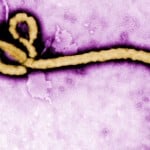
Excellence in care, safety and continuous improvement of care are the hallmarks of the anesthesia profession. Nurse anesthetists may be called upon to care for patients infected with the Ebola virus. The AANA is committed to support Certified Registered Nurse Anesthetists (CRNAs) and the healthcare team to safely deliver patient care, to maintain the health of the nurse anesthetist, and to maintain the safety of families and the community.
SOURCE: ANNA.COM
